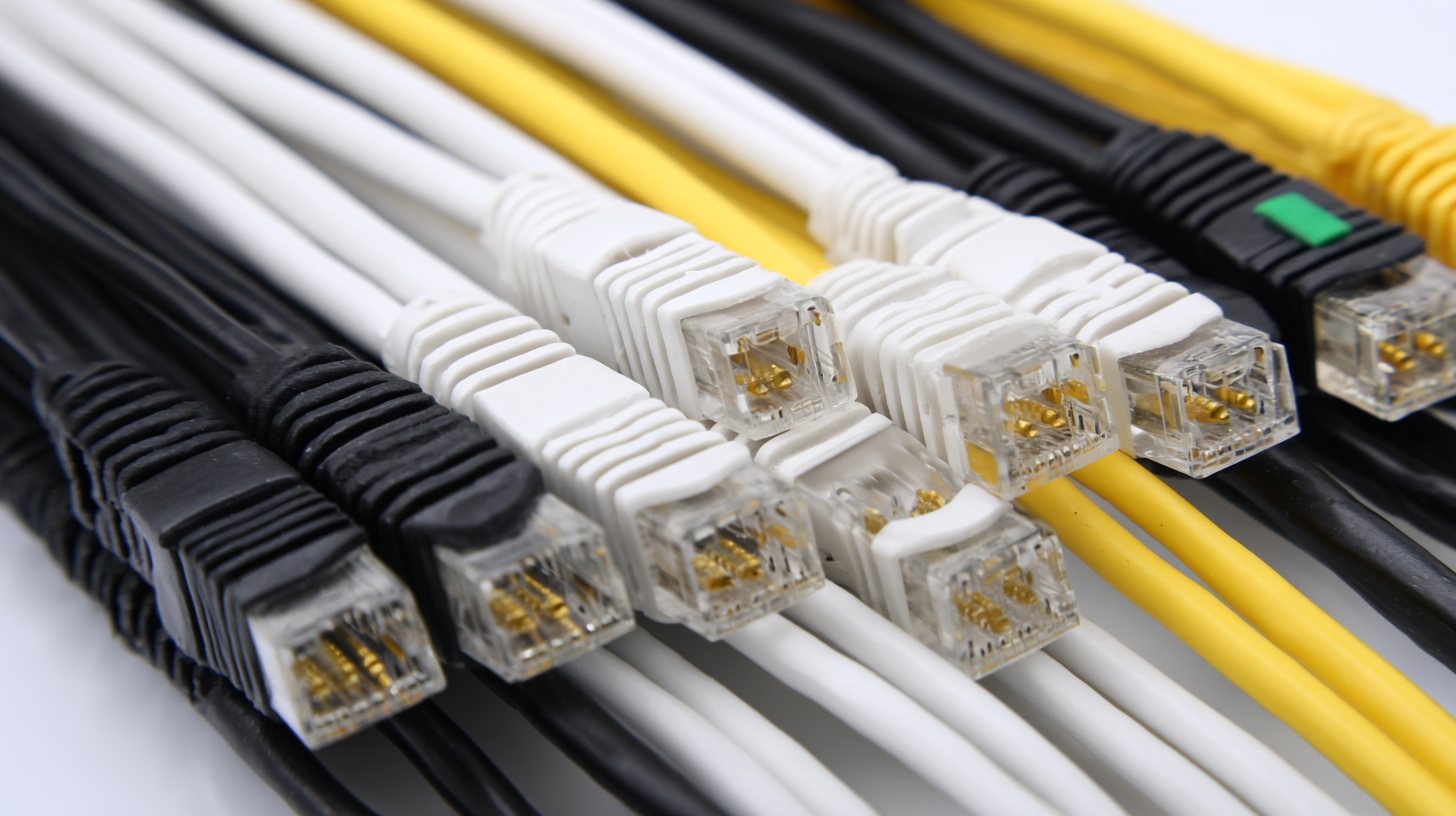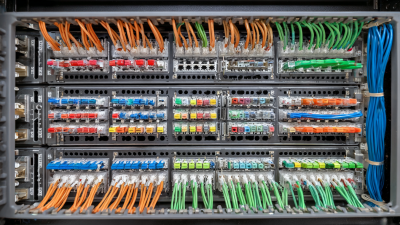How to Choose the Right Cat 6 Bulk Cable for Your Network Needs
Selecting the appropriate cat 6 bulk cable for your network needs is a critical decision that can significantly impact your connectivity and overall network performance. With various options available on the market, understanding the characteristics and advantages of cat 6 cable is essential for both personal and professional applications. This guide will walk you through the key factors to consider when choosing cat 6 bulk cable, including cable quality, length, shielding, and installation requirements. Whether you are setting up a home office or expanding a business network, making an informed choice will ensure optimal data transmission speeds and reliability, thus enhancing your networking experience. By the end of this article, you will have the knowledge necessary to select the right cat 6 bulk cable tailored to your specific needs.

Understanding the Basics of Cat 6 Bulk Cable Specifications
When selecting the right Cat 6 bulk cable for your network needs, understanding the basic specifications is crucial. Cat 6 cables are designed to support data transfer speeds of up to 10 Gbps over distances of 55 meters, making them ideal for high-speed networks. According to a report by the Telecommunications Industry Association (TIA), Cat 6 cables are capable of handling frequencies up to 250 MHz, which is significantly higher than their predecessors, such as Cat 5e, which support up to 100 MHz. This increased capacity significantly reduces crosstalk and improves overall network performance.
Another essential factor to consider is the cable's construction. Cat 6 cables typically come in unshielded twisted pair (UTP) or shielded twisted pair (STP) formats. A study from the International Journal of Computer Networks and Communications indicated that STP cables can offer better performance in environments with a lot of electromagnetic interference (EMI). Moreover, the material used for the conductors—whether copper or aluminum—can impact signal integrity. According to a 2023 market analysis by Research and Markets, the demand for copper-based Cat 6 cables has soared due to their superior performance characteristics, highlighting the importance of choosing the right type for efficient data transmission.
How to Choose the Right Cat 6 Bulk Cable for Your Network Needs
| Specification | Description | Advantages | Typical Use Cases |
|---|---|---|---|
| Cable Type | Unshielded Twisted Pair (UTP) | Cost-effective, widely available | Home networking, standard office setups |
| Category | Cat 6 | Supports up to 10 Gbps for short distances | Data centers, high-speed internet connections |
| Cable Length | Available in various lengths (e.g. 100ft, 250ft, 1000ft) | Flexible for different installation needs | Long-run installations, custom setups |
| Jacket Material | PVC or LSZH options | Durable and flame-resistant options | Commercial buildings, data centers |
| Frequency | Up to 250 MHz | High bandwidth for data transmission | Streaming, gaming, cloud applications |
| Installation Environment | Indoor/Outdoor options available | Versatile for different installation scenarios | Outdoor setups, harsh environments |
Identifying Your Network Requirements and Performance Goals
When selecting the appropriate Cat 6 bulk cable for your network,
it's crucial to first identify your network requirements and performance goals. According to a report from the Telecommunications Industry Association (TIA), Cat 6 cables are designed to support data transfer rates of up to 10 Gbps over a distance of 55 meters. This means if your networking needs involve high-speed data transfer, such as video streaming or online gaming, opting for Cat 6 will provide a significant performance boost compared to its predecessor, Cat 5e, which is limited to speeds of 1 Gbps.
Additionally, understanding the environmental factors that can affect your network's performance is key. The Federal Communications Commission (FCC) emphasizes the importance of installation conditions in their guidelines. For instance, if your cable will run through areas with high electromagnetic interference, such as industrial settings, selecting a shielded Cat 6 cable can reduce signal degradation. By focusing on specific requirements like bandwidth needs, installation environment, and future-proofing considerations, you can make an informed decision that effectively meets the demands of your network.
Evaluating Cable Lengths and Installation Environment Factors
When selecting the right Cat 6 bulk cable, it is crucial to consider the installation environment and cable lengths. According to the Telecommunications Industry Association (TIA), the optimal performance of Cat 6 cables can be influenced by external conditions such as temperature and humidity. For instance, maintaining a temperature range between 32°F to 140°F (0°C to 60°C) is vital to prevent signal degradation. Additionally, factors like bending radius and exposure to electromagnetic interference (EMI) can significantly affect the cable's efficiency.
When evaluating cable lengths, it’s important to adhere to the maximum length recommendations. The TIA specifies that the maximum length of a Cat 6 cable run should not exceed 328 feet (100 meters) to maintain proper performance and minimize attenuation. Longer runs may result in signal loss, requiring repeaters or additional equipment to ensure connectivity.
**Tips:** Always measure the distance between your devices accurately and consider additional length for any bends or turns in your installation. Using plenum-rated cable in HVAC spaces can help enhance safety and performance, protecting your network from fire hazards while also improving signal integrity.
Cat 6 Bulk Cable Installation Environment Factors
Comparing Different Cat 6 Cable Types and Brands
When selecting the appropriate Cat 6 bulk cable for your networking needs, it's crucial to compare the different types and brands available in the market. Cat 6 cables are designed to support high-speed data transfer, with a bandwidth of up to 250 MHz and the capability to handle 10 Gbps for distances up to 55 meters, according to the Telecommunications Industry Association (TIA). This makes them suitable for a variety of applications, from home networks to enterprise environments.
Different brands often bring unique features to the table. For example, some manufacturers offer enhanced shielding techniques that reduce interference in environments with heavy electromagnetic activity. A report by the International Electrotechnical Commission (IEC) emphasizes the importance of choosing cables with quality shielding, indicating that shielded twisted pair (STP) cables can significantly outperform unshielded twisted pair (UTP) cables in terms of signal integrity. Additionally, considerations such as cable length and quality of connectors should not be overlooked, as they can impact overall network performance. Brands like Belden and Cable Matters are known for their reliable Cat 6 options, often recommended for their stringent manufacturing standards and favorable customer reviews.
In conclusion, understanding the differences in cable types and brands is imperative for optimizing network performance. By evaluating specific attributes such as shielding, performance metrics, and customer feedback, you can make an informed decision that aligns with your networking requirements.

Tips for Ensuring Proper Installation and Maintenance of Cat 6 Cables
When it comes to installing Cat 6 cables for your network needs, ensuring proper installation and maintenance is crucial for maximizing performance and longevity. According to a report by the Telecommunications Industry Association, improper cable management can lead to excessive signal loss and interference, which can degrade network performance by up to 40%.
Tips for installation include ensuring that the cable runs do not exceed 90 meters, maintaining proper bend radius, and avoiding sharp turns that could damage the cable. It’s also essential to use the correct connectors and tools to prevent physical strain on the cable, which can result in connectivity issues over time.
In terms of maintenance, regularly inspecting your cable runs for any signs of wear or damage is vital. According to the International Electrotechnical Commission, up to 70% of network failures are attributed to cable-related issues. Keeping your cables organized and labeled can also help you easily identify and resolve potential problems before they escalate. Taking these proactive measures will help ensure that your Cat 6 installation remains efficient and reliable.

Related Posts
-

10 Reasons Why Cat 6 Bulk Cable is Essential for Your Network Installation
-

7 Essential Tips for Choosing the Best Cat 6 Bulk Cable for Your Network Needs
-

Common Issues Faced When Sourcing Bulk Cat 6 Cable for Global Supply Chains
-

How to Choose the Right Fiber Patch Panel for Your Networking Needs
-

How to Choose the Right UTP Cat 6 Cables for Your Network Needs
-

Innovative Solutions for Optimizing Enterprise Networking Efficiency
